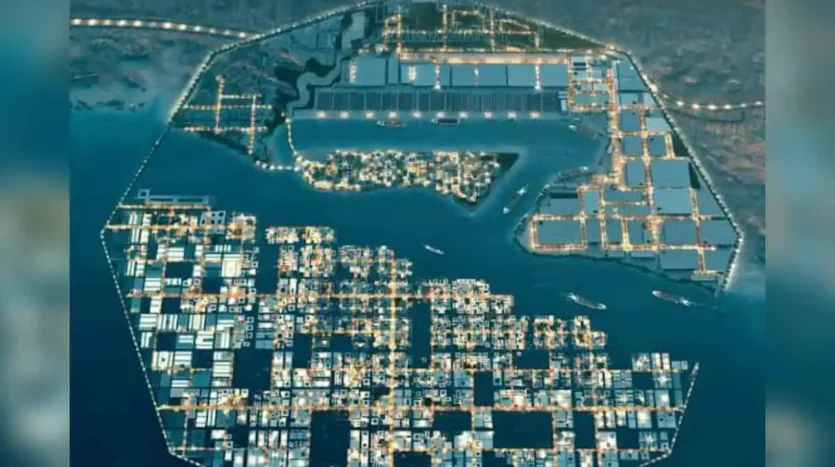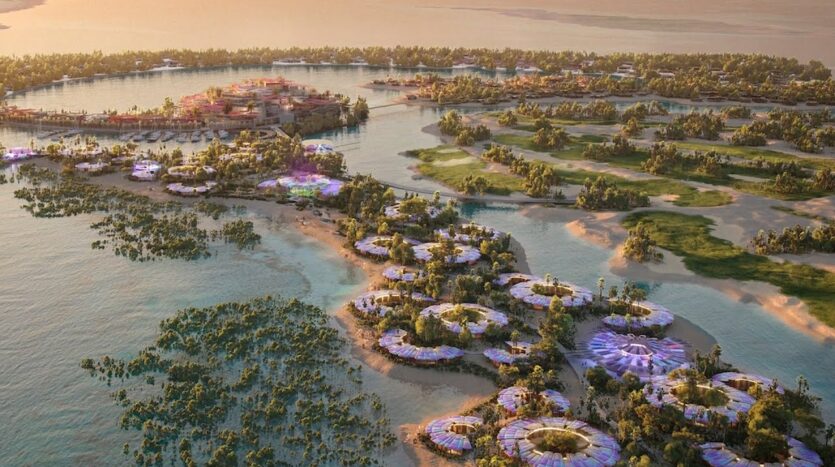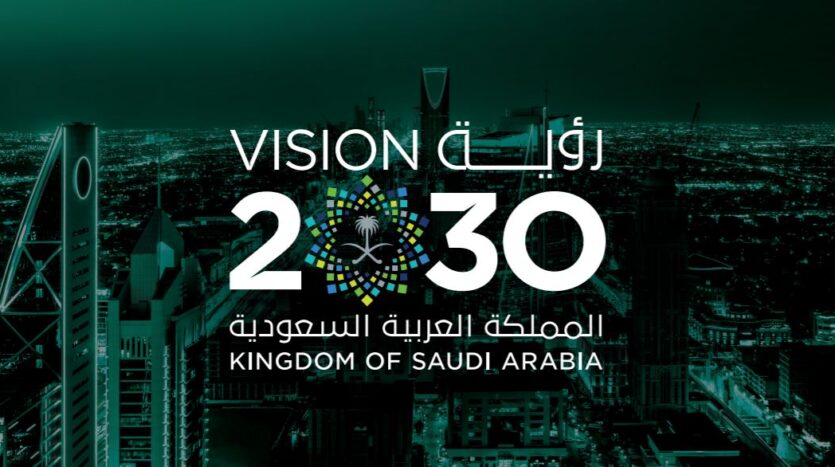Saudi Vision 2030: Economic Diversification through Giga-Projects
Saudi Arabia Vision 2030
Saudi Vision 2030 is a national blueprint launched in 2016 to diversify Saudi Arabia’s economy away from oil by developing new sectors like tourism, entertainment, culture, and technology. The plan’s ambitious goals include making Saudi Arabia a global investment powerhouse and hub connecting three continents. A centerpiece of Vision 2030 is the rollout of “giga-projects” – massive mixed-use developments spearheaded by the Public Investment Fund (PIF) – designed to spur economic growth, create jobs, and boost non-oil revenues. Collectively, projects like NEOM, The Red Sea Project, Qiddiya, Diriyah Gate, AMAALA, and ROSHN are transforming Saudi Arabia’s landscape. Each project focuses on cutting-edge infrastructure and innovation (e.g. renewable energy, smart city technology, heritage preservation) to attract global businesses and visitors. Investors can learn about opportunities and incentives for these projects via official channels such as the Saudi government’s portal Invest Saudi.

NEOM: A Futuristic Smart City
NEOM (26,500 km² in northwest Saudi Arabia) is a $500+ billion flagship project aiming to build “the land of the future” powered entirely by renewable energy. Announced in 2017, NEOM will comprise several innovative districts – THE LINE (a 170 km linear, car-free city), Oxagon (a floating industrial zone), Trojena (a mountain resort), Sindalah (a luxury Red Sea island), and more – connected by high-speed transport. The city plans advanced sectors spanning biotech, robotics, AI, energy, and entertainment. For example, NEOM’s energy arm (Enowa) is developing the world’s largest integrated renewable power system.
NEOM’s infrastructure is already under way: Sindalah’s first resort is under construction, and early groundwork for THE LINE’s “Hidden Marina” district (a pilot 2.4 km section of the Linear City) has begun. Thousands of workers from over 100 countries already live at NEOM, and the project is actively seeking foreign investors in areas like smart cities, green energy, biotech, and tourism. The PIF is the primary funder of NEOM (with $500+ billion committed), but the doors are open to international partners. Investors can explore NEOM’s official website (neom.com) for sector-specific opportunities, or contact the NEOM Investment Office via the site. Key investment areas include renewable energy infrastructure, advanced manufacturing, digital industries, health and education technologies, and hospitality for future residents and tourists.
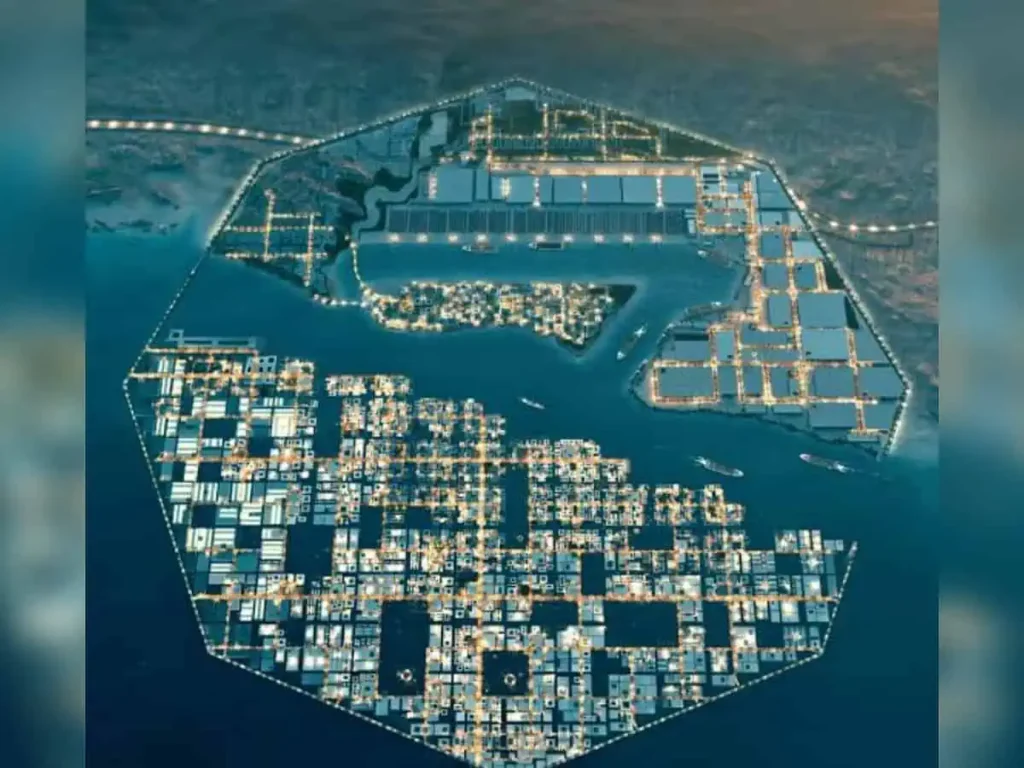
The Red Sea Project: Regenerative Luxury Tourism in Saudi Arabia
The Red Sea Project is a luxury resort and tourism development on Saudi’s western coast, managed by Red Sea Global (RSG). Spanning 28,000 km² of islands and lagoons in the Red Sea, this project will feature a collection of ultra-luxe resorts, wellness hotels, and attractions built to “regenerate” the environment. By 2030, RSG plans to complete 50 resorts and limit annual visitors to 1 million to preserve nature. The first resort opened in 2023, and 16 resorts in Phase 1 will open by 2025. RSG (owned by PIF) aims to protect reefs and wildlife as it develops, capping capacity and committing to 100% renewable energy.
Investor opportunities in the Red Sea Project include luxury hospitality and real estate (hotel/resort development and villas), high-end tourism services, and supporting infrastructure (airports, marinas, transport). For example, the new Red Sea International Airport (near Yanbu) is being built to serve the destination. There is also scope for green technology and conservation ventures – RSG partners have announced major digital and environmental initiatives (e.g. STC’s SAR 1.2 billion investment in smart digital networks). Foreign companies can participate via joint ventures or construction contracts. More information is available on the RSG site (redseaglobal.com), which outlines opportunities in hospitality, marine conservation, entertainment, and community development. A planned golf course and the premier Shura Island development (for festivals and sports) demonstrate the project’s scale.
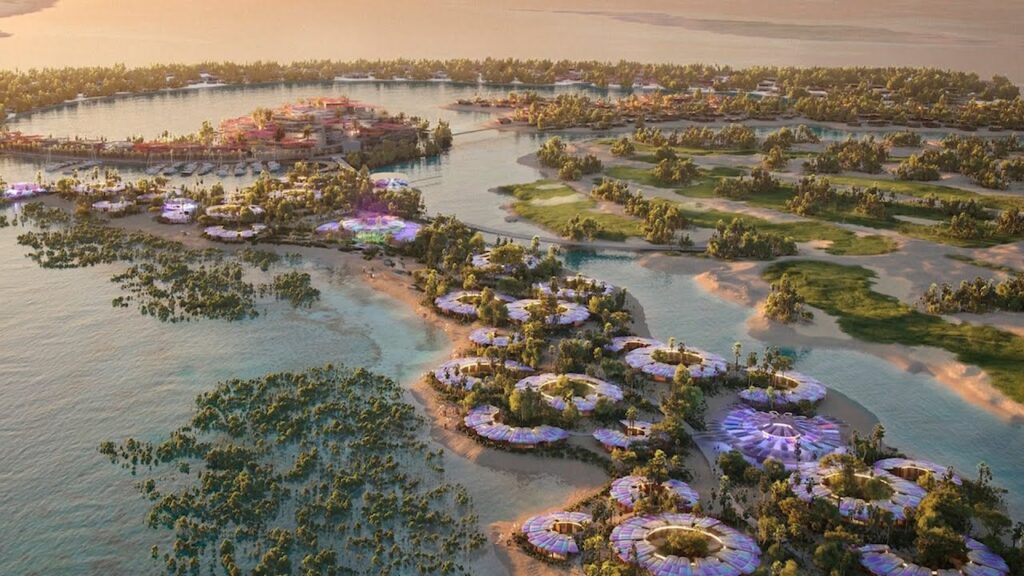
AMAALA: Ultra-Luxury Wellness and Sports Destination
AMAALA is a sister project to the Red Sea Project, targeting ultra-high-end wellness, sports, and luxury tourism. Located on 4,155 km² of Red Sea coastline (within the Prince Mohammed bin Salman Royal Reserve), AMAALA will feature private beaches, marina villages, world-class golf, equestrian and camel-racing facilities, and a marine life institute (Corallium). The development emphasizes sustainability: AMAALA will be powered 100% by renewables, aim for zero waste, and deliver a 30% net conservation benefit to local ecosystems by 2040.
The first phase (Triple Bay) is under construction, with 6 luxury hotels and 1,000+ rooms slated to open by 2025. Ultimately, AMAALA will have 29 hotels and 3,800+ rooms across five bays. PIF and RSG have budgeted SAR 11 billion (USD 3 billion) for AMAALA, expected to create 50,000 jobs. Investment opportunities include high-end wellness real estate (residences, retreat homes), hospitality operations, and sustainable tourism services. The Marine Life Institute also offers R&D collaborations in marine science and coral conservation. AMAALA’s own site (amaala.com) details “Experience” and “Smart” sections, highlighting wellness, sports, and tech-driven luxury. Foreign investors in luxury hospitality, environmental tech, or leisure services can engage via RSG’s investment channels, and may track project updates (e.g., the Coral Reef Institute or AMAALA Yacht Club initiatives).

Qiddiya: Entertainment, Sports, and Culture Hub
Qiddiya City is a 334 km² entertainment and sports giga-project just outside Riyadh. Branded as the “Capital of Entertainment, Sports and the Arts”, Qiddiya will feature theme parks (including a Six Flags park), racing tracks, performing arts venues, nature reserves, and sports facilities. One developer describes it as “more than double the size of Disney World” with 300+ attractions ranging from water parks to snow parks. Qiddiya is expected to draw over 1.5 million annual visitors in its first phase (phases opening since 2022).
Investors can find opportunities in entertainment design, attractions, and operations (rides, roller coasters, theaters), as well as in hospitality (hotels, F&B), sports events and academies, and cultural projects (museums, art centers). For example, “Qiddiya Investment Company” (a PIF entity) highlights partnerships for e-sports and motorsports, and the upcoming Six Flags Qiddiya resort (slated for late 2025) is already inviting vendors. The development also includes racing circuits and karting arenas for motorsports companies. Beyond tourism, Qiddiya will include residential communities and commercial zones, offering real estate and construction contracts. More details on projects and RFPs can be found on the Qiddiya website (qiddiya.com) or by contacting Qiddiya Investment Company. The project’s scale means engineers, architects, and entertainment designers have significant opportunities, and Qiddiya’s core sectors – tourism, sports, culture – align with Vision 2030’s goals of boosting quality of life and non-oil GDP.

Diriyah Gate: Heritage and Culture Destination
Diriyah Gate (Diriyah Company) is a cultural heritage and tourism development on 14 km² of historic Diriyah, the UNESCO-listed birthplace of the Saudi state. It aims to preserve Najdi architecture and create a world-class cultural district. Key components include Diriyah Square (an open-air plaza with restaurants, shops and events), Diriyah Living (residential apartments and serviced residences), museums and galleries showcasing 300 years of Saudi history, plus luxury hotels and traditional markets. The site includes the At-Turaif District (UNESCO World Heritage) and restored mud-brick palaces and forts.
By 2030, Diriyah Gate plans “28+ hotels” and 18,000+ homes, with a projected 50 million annual visitors. Investors have roles in luxury hospitality (e.g. managing boutique hotels), theme-park and attraction design, retail and F&B, and cultural programming. Sustainability is also a focus: the first phase earned LEED Platinum precertification for green building. Diriyah Company (a PIF-backed entity) frequently issues tenders for construction and services. For foreign investors, opportunities include joint ventures in hotel operations or experience design, or supplying technology for smart heritage conservation. The Diriyah website (diriyahcompany.sa) lists investment areas. As one PIF page notes, Diriyah “celebrates Saudi heritage” while creating “one of the world’s premier gathering places”, making it attractive for investors in tourism, retail and real estate looking to engage with cultural tourism.

ROSHN: Integrated Communities and Housing
ROSHN (a PIF-backed real estate developer) focuses on mass-market housing and mixed-use communities, playing a key role in raising Saudi homeownership to 70%. ROSHN is building dozens of projects across the country. For example, Sedra (20 million m² north of Riyadh), Alarous (4 million m² near Jeddah), Almanar (21 million m² in Makkah), and others together span over 200 million m². Each community includes residential units along with amenities like schools, mosques, parks, and shopping centers. Notably, ROSHN also developed a new 45,000-seat stadium (RoshN Stadium) to host sporting events, and “ROSHN Front” (a mixed-use urban hub in north Riyadh with offices, retail and leisure).
Investment opportunities in ROSHN projects span construction, affordable housing finance, retail and hospitality. For example, companies can bid to build or operate schools, clinics, malls, and community centers within these developments. ROSHN’s “Core Assets” include integrated residential communities, retail malls, commercial offices, and hotels, while “Enabling Assets” like education and healthcare create further openings. Because ROSHN projects are spread across multiple cities (Riyadh, Jeddah, Makkah, Dhahran, Al-Hofuf), investors in construction, smart infrastructure, and consumer services can engage on many fronts. The ROSHN site (roshn.sa) and PIF materials detail current communities in development. In sum, ROSHN offers long-term partnerships in the residential sector – from green building tech to smart utilities – aligned with Vision 2030’s housing goals.
Public Investment Fund (PIF) and Investment Support
The Public Investment Fund (PIF) is the master investor behind all these giga-projects, channeling capital and forming partnerships. PIF’s mission is to diversify Saudi Arabia’s economy, and it has allocated hundreds of billions of dollars to these initiatives. It often partners with global firms and allocates joint-venture stakes to strategic investors. For international investors, this means projects have strong state backing and potential for big opportunities.
Foreign companies can engage through various channels. The government’s Invest Saudi portal (investsaudi.sa) is a one-stop platform listing opportunities and offering facilitation services. As Invest Saudi notes, Vision 2030’s giga-projects have created “exciting opportunities for local and international investors”. The portal provides tools for investor registration, visa facilitation (including a Business Visa for visiting investors), sector reports, and matchmaking services. It is linked to the Ministry of Investment (MISA) and offers support like a 24/7 contact center and “Invest Saudi Service Manual.” Foreign investors can browse sector-by-sector opportunities on the portal (e.g., tourism, green energy, construction) and apply to projects. Additionally, PIF’s Private Sector Hub publishes announcements and tender portals for each giga-project. For example, registering on Invest Saudi can grant early notice of bids in Red Sea resorts or Qiddiya attractions.
Saudi Arabia has also enacted investor-friendly reforms to make business faster and safer. Invest Saudi highlights that recent reforms have placed Saudi “among global business reformers”. The country offers incentives (tax holidays, 100% foreign ownership, repatriation of capital, etc.) in many sectors. Importantly, all of the major giga-projects welcome foreign expertise and capital. By using the official channels (such as Vision 2030’s platforms, Invest Saudi, or the specific project websites like neom.com, redseaglobal.com, qiddiya.com, diriyahcompany.sa, amaala.com), international investors can learn project details, contact investment offices, and navigate legal requirements.
Conclusion: Unprecedented Long-Term Opportunities
The Saudi giga-projects under Vision 2030 present unique, long-term investment opportunities. Each is backed by the Saudi state (via the PIF) and aligned with national goals of sustainability, tourism growth, and job creation. They offer entry into world-class developments – from smart cities and luxury resorts to cultural districts and integrated towns – that will shape the future economy. For international businesses and developers, these projects mean access to new markets in hospitality, construction, renewable energy, technology, and more. They also benefit from Saudi reforms that make investment easier and more secure. By partnering with Saudi entities or through public-private ventures, foreign investors can participate in groundbreaking initiatives that promise growth over decades. In summary, Saudi Arabia’s giga-projects are not only transforming the Kingdom’s economy but also opening doors for global investors to join in one of the world’s largest development booms under Vision 2030.


